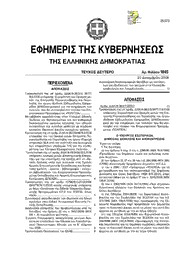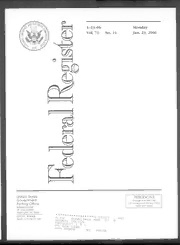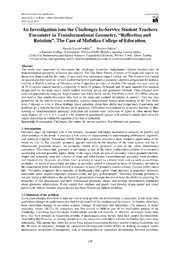
ERIC EJ1083792: An Investigation into the Challenges In-Service Student Teachers Encounter in Transformational Geometry, "Reflection and Rotation". The Case of Mufulira College of Education PDF
Preview ERIC EJ1083792: An Investigation into the Challenges In-Service Student Teachers Encounter in Transformational Geometry, "Reflection and Rotation". The Case of Mufulira College of Education
Journal of Education and Practice www.iiste.org ISSN 2222-1735 (Paper) ISSN 2222-288X (Online) Vol.6, No.2, 2015 An Investigation into the Challenges In-Service Student Teachers Encounter in Transformational Geometry, “Reflection and Rotation”. The Case of Mufulira College of Education. Dennis Kambilombilo1* Whyson Sakala,2 1.Mufulira College of Education , PO box 40400, Mufulira, Zambia, Central Africa 2.School of Mathematics and Natural Sciences, Copperbelt University, PO box 21692, Kitwe, Zambia * E-mail of the corresponding author: dkambilombilo@yahoo.uk.co or dennischali@rocketmail.com Abstract The study was conducted to investigate the challenges in-service mathematics student teachers face in transformational geometry; reflection and rotation. The Van Hiele Theory of levels of Thought was used as the theoretical framework for this study. A case study was undertaken using a written test. The research was carried on second and third years in- service student teachers of mathematics pursuing a diploma programme by distance learning at Mufulira college of Education on the Copperbelt province of Zambia. The sample size was made up of 70 in-service student teachers comprising in terms of gender, 30 female and 40 male students.The research design used for the study was a mixed method involving survey and qualitative methods. Data collected were analyzed quantitatively using the Angel Gutirrez and Adela Jaime and the Van Hiele models .The SPSS software was used to find simple descriptive data such as the mean and standard deviations. A simple t- Test was also performed on the data.In-service mathematics students demonstrated limited understanding of the Van Hiele level 3 through to level 4. These findings raised questions about their ability and competency if questions and problems go a little bit beyond the text book questions. Difficulties encountered by in-service teachers in their learning of transformational geometry; reflection and rotation were: reflection of figure in other mirror lines apart from (x =0, y = x, y = -x and y = 0), rotation of geometrical figures with different centres apart from the origin, describing or writing the equation of the line of reflection. Keywords: Investigation, Challenges, Encounter, In- service teachers, Transformational geometry. 1. Introduction Geometry plays an important role in the primary, secondary and higher mathematics curricula in Zambia and other countries of the world. It provides a rich source of visualization for understanding arithmetical, algebraic, and statistical concepts. Volderman (1998) stated that, geometry provides a more complete appreciation of the world we live in. For example, geometry appears naturally in the structure of the solar system, and the 3- Dimensional geometric shapes. At secondary school level, geometry is part of the whole Mathematics curriculum. This means that, geometry is just taught as part of the whole mathematics syllabus in components comprising selected geometry topics. Some of the topics which are part of secondary school geometry include: shapes and symmetry, area and volumes of plane and solid figures, transformational geometry, earth geometry and trigonometry. However, at tertiary level, geometry is taught as a branch with courses such as coordinate geometry. In terms of assessment, geometry at secondary school is assessed in terms of the topics included in the examination while at tertiary level it is assessed in terms of geometry courses offered. Zeeman (2001) states that, “Geometry comprises those branches of Mathematics that exploit visual intuition to remember theorems, understand proof, inspire conjecture, perceive reality and give global insight”. Therefore, learning geometry is not just learning definitions or the attributes of geometrical concepts but also to have the ability of analyzing the properties of two dimensional and three dimensional geometric shapes and develop mathematical arguments about geometric relationships. It also entails that, teachers and pupils must develop strong spatial and visual power to be able to visualize objects in two and three dimensions without problems. 1.2 Statement of the problem Curriculum changes from time to time are vital to keep up with the developments in education. In the same vein, curriculum changes in mathematics are vital for the benefit of the teachers and the leaners. In Zambia, there have been curriculum changes in secondary schools, colleges of education and universities. For instance, at senior secondary school (10-12), the curriculum was first revised in 2000 as part of the localization process of the Cambridge University local Syndicate Examinations system and recently, in 2013/14. At tertiary level, there have also been attempts at curriculum reforms in mathematics even though these lack proper documentation. (SACMEQ III) However, as already alluded to in this document, curriculum reforms in Zambia have been done uphazardly. This means that, there has never been serious consultation between teacher training institutions and the Ministry of education, through the curriculum Development Centre (CDC) in drafting secondary school mathematics curriculum. Consequently, lack of harmonization in curriculum development between secondary 139 Journal of Education and Practice www.iiste.org ISSN 2222-1735 (Paper) ISSN 2222-288X (Online) Vol.6, No.2, 2015 schools and tertiary teacher education institutions has led to knowledge gaps for teachers. These knowledge gaps are clearly seen in pre-service and in-service mathematics teachers’ inadequacies in relevant content knowledge and skills needed to teach secondary school geometry and in particular transformational geometry effectively. For instance, the Examinations Council Zambia (ECZ) examiners’ report, (2008) reported that questions on earth geometry, trigonometry, and transformational geometry were poorly done and that pupils’ poor performance was attributed to teachers’ lack of adequate and relevant content knowledge to teach secondary school geometry. While there are studies outside Zambia to attest to this such as Mansfield (1985) who contended that, secondary school pre-service teachers have gaps in their content knowledge or deficiencies in knowing how to apply and teach the mathematics addressed across the secondary school mathematics courses, no study such as this has been undertaken in Zambia, more so the study to investigate in-service mathematics student teachers’ transformational geometry content knowledge. Therefore, the study is intended to investigate challenges in-service mathematics teachers face in understanding transformational geometry in view of the knowledge gap created by teacher training institutions’ through their curricula. 1.3 Objectives of the study The research was guided by the following research objectives: (a) To investigate the type of challenges in-service mathematics teachers face in transformational geometry. (b) To explore how the Van Hiele model can be used to explain the challenges in- service mathematics student teachers face in transformational geometry of reflection and rotation. (c) To determine whether differences occur between female and male in-service mathematics student teachers in the Van Hiele levels of geometry acquisition. 1.4 Research questions The objectives of this study will be realized by pursuing answers to the following questions: (a) What geometrical challenges do in-service student teachers encounter in transformational geometry? (b) How can in-service student teachers challenges in Transformational Geometry be explained using the Van Hiele model? (c) Are there significant differences between female and male in-service student teachers in the Van Hiele levels of geometry acquisition? 2. The Literature review 2.1 Experiences from Europe, Asia and America Chappell (2003) claimed that high school students’ less than desirable background in geometry was due to middle school mathematics teachers’ superficial geometry knowledge. Other studies by Duatepe (2000) and Knight (2006) charged that, pre-service elementary school mathematics teachers’ reasoning stages were below level - (III) (ordering). In support of this Mayberry (1983) stated that the pre-service elementary school teachers involved in her study were not at a suitable van Hiele level to understand formal geometry and that their previous instructions had not helped them to attain knowledge of geometry consistent with level – IV. Although these results were for pre-service teachers, they will be useful in the investigation and understanding of in-service mathematics student teachers’ challenges in transformational geometry. Gimenez and Rosich in their study of elementary pre-service teachers in Spain noted that, lack of students’ mathematical knowledge and confidence in mathematics are contributory factors to the low standard of mathematics attainment of their students in many countries. The study further recognized the observations made by other researchers that, pre-service elementary teachers had difficulties in determining: • the correct transformation and motion attributes to move an object from one point to another • the results of transformations involving multiple combinations of figures • the use of transformations as mathematically- general operations which required specifications of inputs A Report by Jones et al entitled teacher knowledge and professional Development in Geometry articulated that, many beginning teachers of Mathematics, do not possess the sort of repertoires of subject- matter knowledge and pedagogical content knowledge of geometry which would enable them teach geometrical topics as well as they might. 2.2 Experiences from Africa/Zambia Masaiti and Manchishi (2011) established that, there were gaps between what the University of Zambia programme was offering and what was obtaining in secondary schools. The study observed that, university trainee teachers were exposed to a broad content material which, in some cases, did not take into consideration what was obtaining in the Zambian secondary schools. In addition, the study revealed that UNZA prepared or 140 Journal of Education and Practice www.iiste.org ISSN 2222-1735 (Paper) ISSN 2222-288X (Online) Vol.6, No.2, 2015 trained teachers were weak in the delivery of subject matter (methodology). The Examination Council (2006) examiners’ report showed that questions on geometry topics such as transformational geometry were very poorly answered. The same report concluded that teachers did not get adequate support in the area of geometry (transformation) in their teacher preparation programme. Thus, they went into the field with the same challenges that they had when they were pupils themselves in schools. 3. Methodology 3.1 The target population This study was conducted at Mufulira College of Education, one of the Government run institutions. This study was conducted among the second and third year in- service student teachers. This cohort of students consisted of 130 second years and 100 third years. The researcher targeted this cohort of students because, for the third year students, this is their final year of study while second year students were included in the study because they were about to go for teaching practice. Since there is a shortage of secondary school teachers, especially in Mathematics and Science these same students will be incorporated to teach at senior secondary school. Thus, it’s for this reason that the researcher decided to investigate their content knowledge in transformational geometry using the Van Hiele model. 3.2 Sample size The sample size had 70 students comprising 30 females and 40 males. There were 36 second year students and 34 third year students. All the students in the population had already learnt Geometrical Transformations which meant that even the students who constituted the sample had knowledge about Geometrical Transformation. 3.3 Research design The research design for this study was descriptive survey in which data were collected using a self-designed Student Mathematics Achievement Test (SMAT) which was administered to 70 students. This was complemented by desk research involving getting data from published sources (journals, books, etc.,) and internet sources. A mixed method was used. That is both qualitative and quantitative methods were utilized in analyzing data. For this reason, a survey method was found to be the best method. 3.4 Data collection Data were collected using the following techniques: Student Mathematics Achievement Test (SMAT) which was administered to 70 students.. Desk research involving getting data from published sources (journals, books, etc.,) and internet sources was used to collect data for the study. 3.5 Data analysis techniques Data was analyzed using a combination of Angel Gutierrez and Adela Jaime (1987) and Van Hiele (1957) models. The Gutierrez and Jaime model was used to analyze the results in terms of the achievement of each participant in the four levels of the Van Hiele Geometric Model. The results of each of the 70 students were then calculated, summarized and compared with Van Hiele levels. The Van Hiele Degrees of Acquisition model was then applied to further analyze how the in-service mathematics student teachers in the study faired on the Van Hiele model in terms of actual acquisition of geometry concepts at each level. Because the Gutierrez and Jaime model generated too much data, the researcher only used the averages obtained by each student at each level of the Van Hiele model. These were treated as low data. By using the SPSS, the means and standard deviations for each level, for the 70 students were computed. 4. Results The research was intended to answer three questions: 1. What geometrical challenges do in-service student teachers encounter in transformational geometry? 2. How can in-service student teachers challenges in transformational geometry be explained using the Van Hiele model? 3. Are there significant differences between female and male in-service student teachers in the Van Hiele levels of geometry acquisition? These questions were answered as follows: Question 1 The study demonstrated that in-service teachers encounter difficulties in transformational geometry. First and foremost 75% of the students included in the study had problems in using mathematical instruments and 141 Journal of Education and Practice www.iiste.org ISSN 2222-1735 (Paper) ISSN 2222-288X (Online) Vol.6, No.2, 2015 therefore opted to skip questions which required the use of protractors and compasses or decided to guess answers hence ended up failing these questions. Results for questions 2, 6 and 7 attest to this fact. Apart from this, students demonstrated serious challenges on reflection in the sense that most of them could not identify and let alone write the equation of the line of reflection. This was clearly seen in question 3 (b). In the same way, almost all the students could not identify or find the centre of rotation as well as state the angle of rotation. This was because of lack of skills on how to use the protractor and the compasses. Another geometrical challenge which my study group faced was how to find the image of an object when the line of reflection is slanting. The fact that no one managed to get this question correct is very worrying. Finally, students demonstrated weakness in understanding properties of reflection and rotation. A good number of them could not understand or explain what would happen to an object after undergoing reflection or rotation as was the case in question 4(a) and 5(a).The inability to understand the properties made students fail to distinguish between reflection and rotation. Table 2 below summarizes the performance of students on each test item. 4.1 Table 2 Table showing how students performed on each question item in the test administered. Question Number of students who Number of students Number answered correctly who failed to answer 1 (a) 67 3 1 (b) 51 19 1 c 64 6 2 (a) 45 25 2 (b) 0 70 3 (a) i 30 40 3 (a) ii 26 44 3 (b) 14 56 4 (a) 65 5 4 (b) 18 52 5 (a) i 14 56 5 (a) ii 5 65 5 (a) iii 6 64 5 (b) 18 52 6 (a) 10 60 6 (b) 37 33 6 c 2 68 7 (a) 26 44 7 (b) i 2 68 7 (b) ii 2 68 The picture coming from the analysis in table 2 above is that students only managed to do very well on lower level questions which tested them on recall or identification of transformations. To the contrary, students’ performance was very poor on higher order questions that required them to connect ideas and make deductions before answering. For instance, question 2 (b) where all the students failed to locate the image after a reflection in a slanting line. Also question 7 (b) was poorly answered because students could not find the centre and angle of rotation. Only 2 students managed to find the correct answers. Similarly, question 6 (c) was badly answered. Students failed to give a reason how they arrived at the answer in 6(b). This could be attributed to the fact that most of the students depended so much on memorizing concepts. The analysis above was too shallow to guide the researcher decide what levels of the Van Hiele in- service student teachers found challenging. Therefore, to have an in-depth understanding of the results at hand, the researcher then applied the Gutierrez and Jamie eight question type model. This model was designed to analyze one word and open – ended questions. According to this model, in an open-ended question type, an answer can be adequate according to the criteria of a given thinking level but not valid according to the criteria of a higher level. As such any reply to an open- ended item may be assigned to one of the following types. Type 0: No reply or answers that cannot be codified. Type 1: answers that indicate that the learner has not attained a given level but that give no information about any lower level. Type 2: Wrong and insufficiently worked out answers that give some indication of a given level of reasoning; answers that contain incorrect and reduced explanations, reasoning processes, or results. Type 3: Correct but insufficiently worked out answers that give some indication of a given level of reasoning; 142 Journal of Education and Practice www.iiste.org ISSN 2222-1735 (Paper) ISSN 2222-288X (Online) Vol.6, No.2, 2015 answers that contain very few explanations, incorrect reasoning processes, or very incomplete results. Type 4: Correct or incorrect answers that clearly reflect characteristic features of two consecutive van Hiele levels and that contain clear reasoning processes and sufficient justifications. Type 5: Incorrect answers that clearly reflect a level of reasoning; answers that present reasoning processes that are complete but incorrect or answers that present correct reasoning processes that do not lead to the solution of the stated problem. Type 6: Correct answers that clearly reflect a given level of reasoning but that are incomplete or insufficiently justified. Type7: Correct, complete, and sufficiently justified answers that clearly reflect a given level of reasoning. The eight types of answers reflect the various degrees of acquisition of the Van Hiele levels of thinking defined above. Question 2 The analysis above has shown that in-service student teachers have serious problems in transformational geometry. Table 2 above demonstrated that students have problems with higher order questions. As the level of difficulty increased, the number of students getting wrong answers also increased. Table 2 further demonstrated the existence of the problem by pointing out specifically on the Van Hiele levels where in-service student teachers’ challenges are in terms of transformational geometry. According to table 2, the students have challenges in level 2, 3 and 4. In other words, the in-service student teachers have problems with questions that demand analysis and deduction. As this was not enough the comparative analysis with the Van Hiele degree s of acquisition illustrated in table 10 showed remarkable differences in terms of students’ levels of acquisition. The data revealed that in-service student teachers who participated in the study had low degrees of acquisition which culminated in students failing to answer or partially answer higher order questions. The data showed that there were 59 students in the no or lower category for level 2, 63 students for level 3 and 57 for level 4. The study noted that the study group was operating at levels 1 and 2 of the Van Hiele model. As such, students find higher order questions challenging and problematic and could not successfully answer them. Table 10 Table summarizing the performance of students on Van Hiele’s Degrees of Acquisition Degrees of Acquisition LEVEL NO LOW INTERMEDIATE HIGH COMPLETE TYPE ACQUISITION ACQUISITION ACQUISITION ACQUISITION ACQUISITION 1 0 4 18 44 4 2 15 44 8 3 0 3 35 28 5 2 0 4 23 34 7 4 2 Table 10 above gives a clear picture of the students in this study. The data showed that there were more students who had attained either no acquisition or just low acquisition in level 2, 3 and 4. For instance, there were 59 students in level 2 who had acquired either no acquisition or low acquisition as compared to 11 students who had acquired either intermediate or high acquisition degrees. This means that the students were more comfortable with basic questions of level 2 type than those which require them to analyze situations. For the test used in this study, many students failed to find the image of a figure when the line of reflection was slanting. In level 3 and level 4 the picture was not any different. For example, there were 63 students who had acquired either no acquisition or low acquisition at level 3 as compared to 7 students who had attained intermediate or high acquisition. In a nutshell, we can conclude from the data above that almost all the students who took part in the study have not acquired geometrical skills to enable them answer questions at higher level. Most of them are still operating at the first two Van Hiele’s degrees of acquisition. Question 3 In order to provide an adequate answer to this question, data were extracted or separated from table 2. As already pointed out in the study, there were 40 male and 30 female students who participated in this study. However, for this analysis, only 60 students were considered because 10 scripts for men were not adequately completed. Table 12 and table 13 illustrate the performance of female and male students on each level of the Van Hiele model. From the two tables we first noted that at level 1, all (30) female students scored an average score of 50% and above while two male students scored an average score below 50%. This implied that at level 1, female students scored a 100 %. In other words, female students exhibited no serious problems at level 1 of the Van Hiele model. For level 2, comparatively the performance of both female and male students was extremely poor. 143 Journal of Education and Practice www.iiste.org ISSN 2222-1735 (Paper) ISSN 2222-288X (Online) Vol.6, No.2, 2015 Only three female students managed to score an average of 50% and above whereas two male students managed to get an average score of 50% and above. These results indicated that both female and male students encounter problems related to analysis. Furthermore, both female and male performed badly at level 3 with all the female students failing to reach an average score of 50% while only 3 male students got an average of 50% and above. In the case of female students, the lowest average scored at this level was 4 while for male students it was a 3. On the other hand, the highest average score obtained at this was 37% for female students while male students managed to get an average score of 83%. The data showed that both female and male students faced serious difficulties at this level. However, female students seemed to experience a serious challenge than male students looking at the averages scored at this level. At level 4, the picture was not any better for the two groups. For instance, no female student scored an average of 50% and above. 4 students scored an average of 0% and the maximum average score obtained was 40%. On the other hand, 6 male students scored an average score of 50% and above and 87% was the maximum average scored obtained. Like their female counterparts, 4 male students obtained an average score of 0%. Again we observe that both groups did not perform very well at this level and thus demonstrated huge concern as to what is happening to teachers. These results in deeded have demonstrated that in-service student teachers have extreme challenges in transformational geometry. The results have shown that generally there is no significant difference between female and male students on all the Van Hiele levels despite minor differences in individual performance in scattered cases on the levels. Table 12 4.2 Analysis of results by gender (Female) Level 1 Level 2 level 3 level 4 67 27 13 40 67 33 17 47 83 58 20 33 67 17 23 33 67 32 13 40 50 23 13 40 67 32 20 0 67 32 27 40 83 64 18 40 50 17 7 40 67 17 7 0 67 13 13 40 50 4 7 13 83 23 10 33 56 27 20 40 50 13 3 0 67 13 7 0 50 17 7 40 56 31 13 47 67 44 20 40 89 23 13 40 83 32 7 40 50 12 4 7 83 64 7 33 50 12 7 7 50 12 27 40 67 53 23 40 67 17 37 7 83 19 32 47 61 32 13 33 144 Journal of Education and Practice www.iiste.org ISSN 2222-1735 (Paper) ISSN 2222-288X (Online) Vol.6, No.2, 2015 Table 13 4.3 Analysis of results by gender (Male) Level 1 Level 2 level 3 level 4 50 17 13 13 50 17 10 7 72 19 7 0 83 38 13 0 67 16 10 40 61 18 30 27 67 19 27 67 72 52 63 60 50 33 13 7 67 19 29 27 50 4 3 0 67 48 10 3 50 23 13 40 100 55 37 7 72 22 23 20 67 19 20 0 78 13 30 17 58 22 27 20 83 69 83 47 67 29 24 47 75 22 13 20 33 14 33 87 33 18 30 87 72 29 54 40 72 43 37 85 83 17 7 33 83 42 10 7 83 28 15 33 67 29 38 65 95 21 26 13 4.4 Analysis of results using SPSS Table 14 Analysis of male student results in terms of Mean and Standard Deviation Level Number of participants (N) Minimum Maximum Mean Standard Deviation level 1 30 33 100 68 16 Level 2 30 4 69 27 16 Level 3 30 3 83 25 18 Level 4 30 0 87 31 27 Total No. 30 Table 14 summarized how male students faired on the four Van Hiele levels. From the table above we noted that male student performed very well at level 1 where the mean was above 60%. Here, the minimum average score was 33% compared to the maximum score of 100%. Nonetheless, students’ performance on the next three levels was pathetic and below average. For example, the group average in level 2 was only 26.6% or approximately 27%, while for level 3 the group average reduced to 24.9% or approximately 25% and was only at 31% at level 4. Worse still, the group minimum score at level 4 was 0% while the maximum score was 87%. 145 Journal of Education and Practice www.iiste.org ISSN 2222-1735 (Paper) ISSN 2222-288X (Online) Vol.6, No.2, 2015 Table 15 Analysis of Female student results in terms of Mean and Standard Deviation Level Number of participants (N) Minimum Maximum Mean Standard Deviation level 1 30 50 89 65 13 Level 2 30 4 64 27 16 Level 3 30 3 37 15 9 Level 4 30 0 47 30 16 Total No. 30 Table 15 is a summary of how female students faired on the Van Hiele model. As illustrated in the table above; female students, like their male counterparts, did extremely well on level 1. However, students’ performance at levels 2, 3 and 4 was not impressive. The mean score for these levels were 27%, 15% and 30% respectively. The minimum scores were 4%, 3% and 0% whereas the maximum scores were 64%, 37% and 47%. These results demonstrated the severity of the problem. The results showed that female students had problems with levels 2, 3 and 4 like their male counterparts. To further demonstrate that there was no significant difference between female and male students’ performance on the Van Hiele model, a t- Test was performed on the two groups at α = 0.05 the results are tabulated in table 16 and table 17 below. Table 16 Analysis of Male students’ results using One-Sample t-Test α = 0 . 0 5 Level t df sig. (2tailed) Mean 95% confidence interval of the difference Difference Lower Upper Level 1 23 29 0 68 62 73 Level 2 10 29 0 27 21 32 Level 3 8 29 0 25 18 32 Level 4 6 29 0 31 24 41 Table 17 Analysis of Female students’ results using One-Sample t-Test α = 0 . 0 5 Level t df sig. (2tailed) Mean 95% confidence interval of the difference Difference Lower Upper Level 1 29 29 0 65 61 70 Level 2 9 29 0 27 21 33 Level 3 10 29 0 15 12 18 Level 4 10 29 0 30 24 36 From the two tables, 16 and 17 it was noted that no significant differences existed between female and male in- service student teachers’ in acquisition of concepts in transformational geometry. This can be inferred from the means of the two groups which are close to each other. For Instance, the means of the female students on the four levels were 65, 27, 15 and 30. On the other hand, the means for male students on the four levels were: 68, 27, 25 and 31.Similarly, the t values depicted the same picture. For example, the t values for the female in- service student teachers on the four levels were: 29, 9, 10 and 10; whereas those for male in-service student teachers were: 23, 10, 8 and 6. So, looking at these sets of values we concluded that no significant differences occurred between female and male acquisition of geometry concepts. While one may be forced to argue that differences do exist, for example if we look at the mean of 68 against that of 65 for male students and female students in level 1. In the same way if we compare the t value of 29 for female students against the t value of 23 for male students in level 1, we could see the differences. However, here we are interested in significant differences, differences which will impact very much on the performance of the two groups. 146 Journal of Education and Practice www.iiste.org ISSN 2222-1735 (Paper) ISSN 2222-288X (Online) Vol.6, No.2, 2015 5 Discussion of findings The first objective of this study was aimed at investigating the type of challenges in-service mathematics student teachers face in transformational geometry; reflection and rotation. According to the study, in-service mathematics student teachers face several problems in transformational geometry. For instance, many of the participants had problems in using mathematics instruments (protractors and pairs of compasses). This was more evident in questions 2(b), 5(a), 6(a) and 6(c) and 7(b) as illustrated in table 2 where at least 60 students failed to answer the questions correct. Students showed seriously limitations with questions on reflection which required them to find images of objects reflected in slant lines. The other challenge that in-service mathematics student teachers faced was that many of the participants could not answer questions which needed them to describe the transformation, writing the equation of the line of reflections or stating the centre or angle of rotation. This was the case with questions 3, 4(b), 5(a) i, and 5(b), and 7(c) where at least participants failed to answer the questions. Table 2 demonstrates these results clearly. Acquah (2011) observed that, out of the total number of 200 pre-service teachers who answered questions on reflection, only 53 pre-service teachers representing 26.5% of the number had all answers right. The remaining 73.5% of pre-service teachers showed high level of difficulty in the area of geometric reflection y =0,x=0,y = x,y =−x involving other orientations apart from these familiar mirror lines ( ). From the foregoing discussion, the study has established that, in-service mathematics student teachers encounter challenges in transformational geometry; reflection and rotation. These challenges include mechanical problems such as the inability of in-service mathematics student teachers to use mathematical instruments correctly and also the challenges to apply the geometric concepts. The other objective which the study addressed was to find out how the Van Hiele model can be used to explain the challenges in- service student teachers face in transformational geometry of reflection and rotation. The research found out that, in-service mathematics student teachers challenges in transformational geometry of reflection and rotation were at levels 2, 3 and 4 of the Van Hiele model. Suffice to say that, serious limitations by almost all the in-service student teachers who took part in the study were noticed at these levels. For instance, out of the 70 in-service mathematics student teachers, 68 of them failed to answer question 7 (b) while the entire sample could not answer question 2 (b). The two questions were at level 3 and level 2 respectively. Table 10 was used to summarize the degrees of acquisition on the Van Hiele model by each of the 70 in-service mathematics student teachers under study. It is clear from the table that this cohort of students had massive challenges in transformational geometry especially with questions that demanded analysis, abstraction, deduction and rigor. For our study, these questions represented levels 2, 3 and 4. The table showed that the degrees of acquisition of the majority of the members of the study group were either at no degrees of acquisition or low degrees of acquisitions. For instance, there were 35 students with no degrees of acquisition and 28 students with low degrees of acquisition at level 3 giving the total number of 61 students whose degrees of acquisition ranged from 0% to 40%. This represented 87% of the total sample. These students could not operate sufficiently at level 3. On the other hand, there were 23 students with no degrees of acquisition and 34 students with low degrees of acquisition at level 4 giving the total number of 57 students whose degrees of acquisition ranges from 0% to 40%. This represented 81% of the total number of students who took part in the study. Again, these students were unable to operate satisfactorily at level 4.Duatepe (2000) and Knight (2006) charged that, pre-service elementary school mathematics teachers’ reasoning stages were below level - (III). From the discussions above, the researcher’s conclusion is that, the cohort of students in the study group did not attain the Van Hiele levels that would enable them handle questions on transformational geometry of reflection and rotations. The students were operating at level 1(visualization stage) and were competent in answering type 1 questions. The third objective to this study was to determine whether differences occur between female and male in-service mathematics student teachers in the Van Hiele levels of geometry acquisition. From the cohort of students who participated in the study, it was found that no significant differences existed between the two groups. However, both groups faced challenges at levels 2, 3 and 4 of the Van Hiele model. They had problems with questions involving analysis, deduction and rigor. The majority of them had attained degrees of acquisitions ranging from 0%to 40%. The finding of the research on this objective agrees with the findings of Halat (2008) who demonstrated that, there was no statistically significant difference with reference to geometric thinking levels between male and female mathematics teachers on the geometry test. 6. Conclusion The study was conducted to investigate the challenges that in- service student teachers face in transformational geometry; reflection and rotation. The study has concluded beyond doubt that in-service mathematics student teachers encounter serious challenges in transformational geometry; reflection and rotation. These challenges 147 Journal of Education and Practice www.iiste.org ISSN 2222-1735 (Paper) ISSN 2222-288X (Online) Vol.6, No.2, 2015 include mechanic and content knowledge. For instance, the study highlighted that in-service mathematics teachers could not use instruments such as protractors and compasses. Apart from this, in-service mathematics student teachers showed limitation in dealing with reflections in slant lines and also in writing equations of lines of reflection. Besides these, in-service mathematics teachers demonstrated inadequacies in rotation geometry. For instance, locating the centre and determining the angle of rotation seem to be a common problem among in- service mathematics teachers. This is because these students fail to handle or think beyond recognition or visualization. The findings of the research clearly agree with the Ho hypothesis that, in-service mathematics student teachers encounter challenges in transformational geometry and that these challenges are statistically significant. In-service mathematics student teachers who took part in the research demonstrated severe limitation on Van Hiele levels III and IV. As such these teachers cannot teach transformational geometry competently as they are below the level of their target audience (senior secondary pupils) in terms of geometry concept acquisition. Consequently, the inadequacies exhibited by in-service teachers in transformational geometry cannot be ruled out as the cause of students’ poor performance in geometry subjects and particularly transformation. However, there is need to conduct a further research on the geometry content knowledge of in-service mathematics student teachers in other teacher training institutions in order to strengthen the findings of this study. 7. Recommendations Having successfully conducted the study, the researcher decided to make the following recommendations arising from the finding of the research. To begin with, one the recommendations is that the education curriculum developers should consider revising or completely developing curricula for teacher training institutions which will assist teachers teach at secondary school level without problems. That is curricula which are relevant to secondary school mathematics unlike the situation now, where would be teachers are empowered with too much content knowledge which in most cases is not beneficial to both the teacher and the pupils. It will be wonderful to see newly created universities and colleges of education take up this challenge. Secondly, the curriculum developers should also consider bringing forward topics such as transformational geometry, earth geometry and linear programming in order to afford pupils time to learn them in good time as these topics are very important and they are always assessed. Instead of putting these topics in the third term of grade 12, it would be ideal to put them in the first term of grade 12. Another recommendation is that teacher education in Zambia should consider taking a leading role in monitoring private teacher colleges as they are doing to public colleges of education. Teacher education should get involved in academic recruitment of staff, curriculum issues and the quality of teachers being produced in these institutions if education standards especially in mathematics have to be improved. This is so because; the teachers from private teachers colleges are being employed by the government; some of whom are teaching in secondary schools. This is very important because there are so many private teachers colleges that have mushroomed due to liberalization of the education sector. As such, government through the ministry education should strengthen its monitoring system in order ensure quality of education. Moreover, there is need to continue supporting continuous professional development programmes or activities in colleges and secondary schools and assisting and supporting teachers of mathematics pursuing further studies. In fact, the idea of “fast track” programme for teachers should be continued in order to reduce on the shortage of mathematics university teachers to teach in secondary schools. However, a suitable curriculum should be devised for this programme so that the teachers being trained have the right or suitable content to teach secondary school mathematics as earlier alluded to. Finally, the research would like to recommend that lecturers of mathematics should consider using the Gutierrez and Jamie model in assessing their students in geometry topics or courses in order to have an in-depth meaning of student answers and let alone assessment. Acknowledgement I’ m greatly indebted to Mr. W Sakala, my supervisor under whose direction and guidance this work has come to fruition. I would sincerely like to express my heartfelt gratitude to him for his patience, in-depth constructive criticisms and valuable suggestions, which contributed to the success of this work. Special thanks go to Mrs. G. Chilekwa, the principal Mufulira College of Education and Mr. D. Yumba, the vice principal Mufulira College of Education for allowing me to enroll for this programme and for their subsequent material support rendered to me while pursuing this programme. Finally, I would also like to passionately thank the students who volunteered to take part in this study. To you all I say, God bless you abundantly. REFERENCES 1. Ball, D. L. (1990). Teaching Mathematics for Understanding: What do teachers need to know about 148
The list of books you might like

The Spanish Love Deception

Haunting Adeline

The 48 Laws of Power

The Subtle Art of Not Giving a F*ck

The Art of Whittling: Classic Woodworking Projects for Beginners and Hobbyists

Alcatel OneTouch Pop 7 User guide
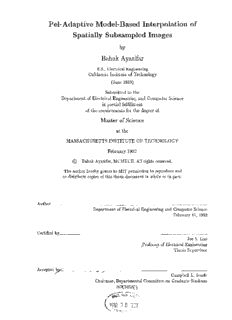
by
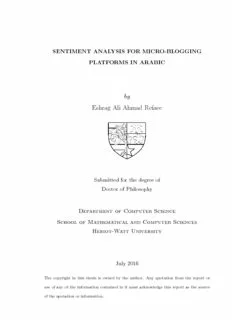
by Eshrag Ali Ahmad Refaee
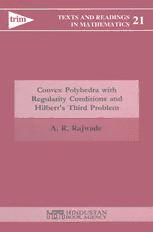
Convex Polyhedra with Regularity Conditions and Hilbert’s Third Problem
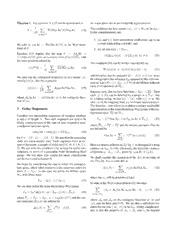
DTIC ADA475667: Finite Heisenberg-Weyl Groups and Golay Complementary Sequences
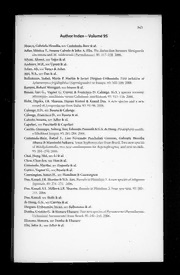
Mycotaxon 2006: Vol 95 Index
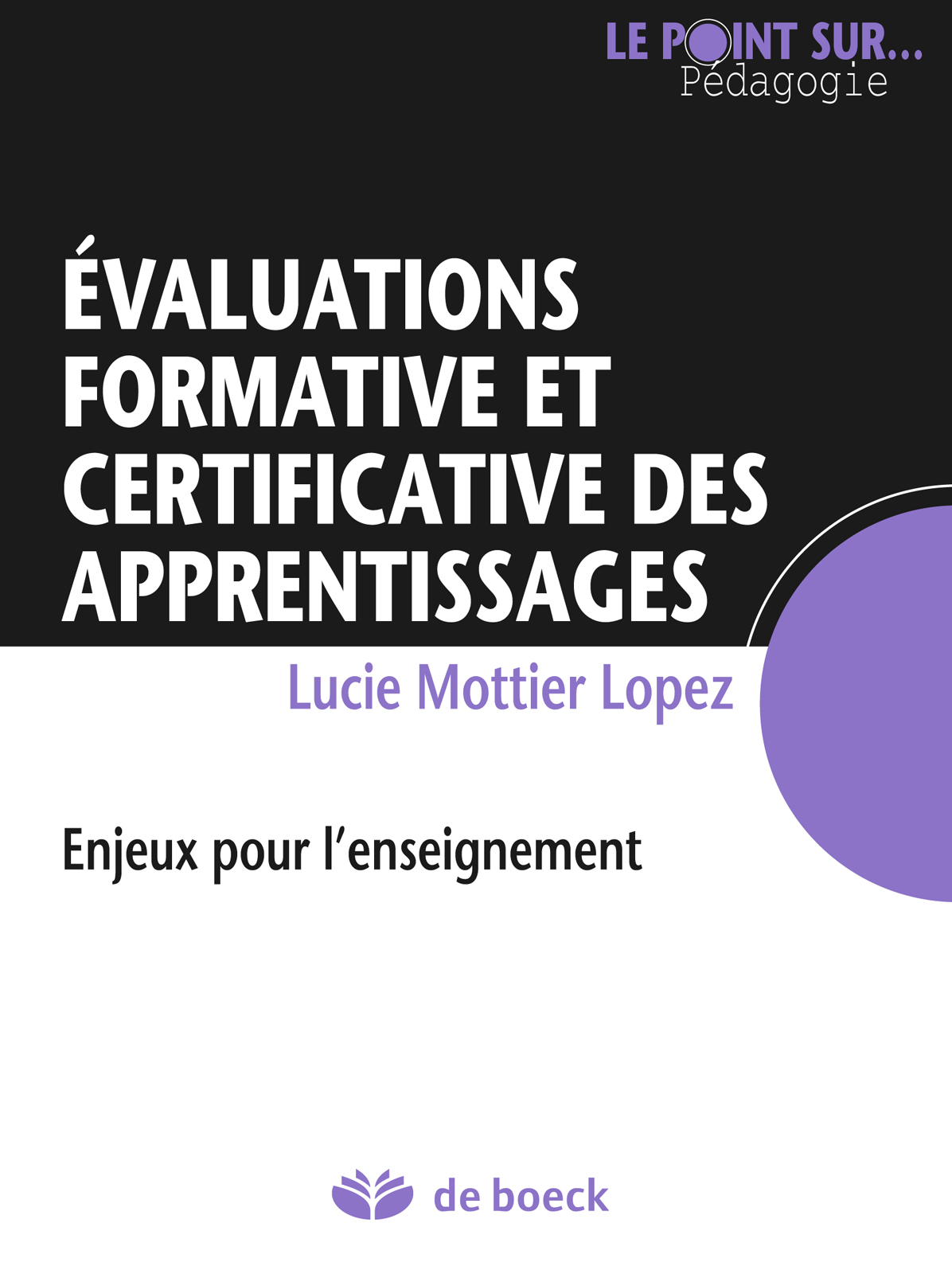
Évaluations formative et certificative des apprentissages
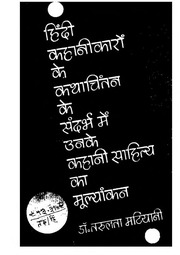
Hindi Kahanikaro Ke Kathachintan Ke Sandrabh Main Unke Kahani Sahitya Ka Mulyakan
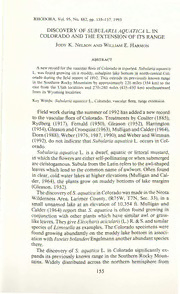
DISCOVERY OF SUBULARIA-AQUATICA L IN COLORADO AND THE EXTENSION OF ITS RANGE

Духовные христиане молокане в Амурской области во второй половине XIX - первой трети ХХ вв
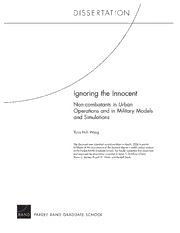
DTIC ADA487760: Ignoring the Innocent: Non-combatants in Urban Operations and in Military Models and Simulations

Modern Drummer Issue 381
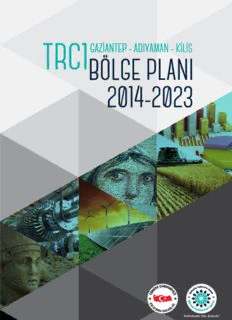
bölge planı tanımı ve planın hazırlanma süreci 7
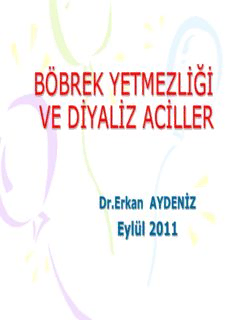
böbrek yetmezliği ve diyaliz aciller

Bette Midler: Still Divine
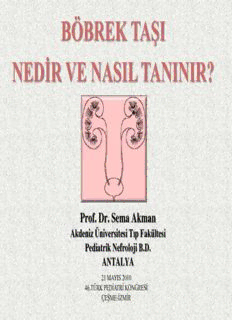
böbrek taşı nedir ve nasıl tanınır?
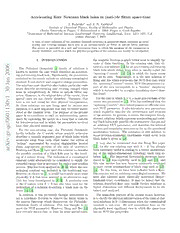
Accelerating Kerr-Newman black holes in (anti-)de Sitter space-time
